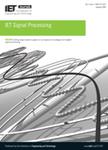版权所有:内蒙古大学图书馆 技术提供:维普资讯• 智图
内蒙古自治区呼和浩特市赛罕区大学西街235号 邮编: 010021

作者机构:Kamaraj Coll Engn & Technol Dept Elect & Commun Engn Madurai Tamil Nadu India VSB Engn Coll Dept Elect & Commun Engn Karur India Aditya Coll Engn Dept Elect & Commun Engn Surampalem India
出 版 物:《IET SIGNAL PROCESSING》 (IET Signal Proc.)
年 卷 期:2021年第15卷第2期
页 面:122-140页
核心收录:
主 题:brain electroencephalography feature extraction medical signal detection medical signal processing neurophysiology principal component analysis recurrent neural nets signal classification spectral analysis support vector machines
摘 要:Electroencephalogram (EEG) signal is mostly utilised to monitor epilepsy to revitalize the close loop brain. Several classical methods devised to identify seizures rely on visual analysis of EEG signals which is a costly and complex task if channel count increases. A novel method, namely, a rag-Rider optimisation algorithm (rag-ROA) is devised for training a deep recurrent neural network (Deep RNN) to discover epileptic seizures. Here the input EEG signals are splitted to different channels wherein each channel undergoes feature extraction. The features like Holoentropy, relative energy, fluctuation index, tonal power ratio, spectral features along with the proposed Taylor-based delta amplitude modulation spectrogram (Taylor-based delta AMS) are mined from each channel. The proposed Taylor-based delta AMS is designed by integrating the delta AMS and Taylor series. The probabilistic principal component analysis (PPCA) is employed to reduce the feature dimension. The dimensionally reduced feature vector is classified with Deep RNN using rag-ROA, which is designed by integrating rag-bull rider along with the four other riders available in the Rider optimisation algorithm (ROA). Thus, the resulted output of the proposed rag-ROA-based deep RNN is employed for EEG seizure detection. The proposed rag-ROA-based Deep RNN showed improved results with maximal accuracy of 88.8%, maximal sensitivity of 91.9%, and maximal specificity of 89.9% than the existing methods, such as Wavelet + SVM, HWPT + RVM, MVM-FzEN, and EWT + RF, using the TUEP dataset.